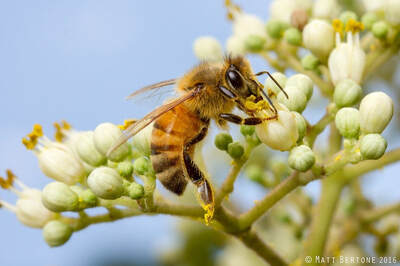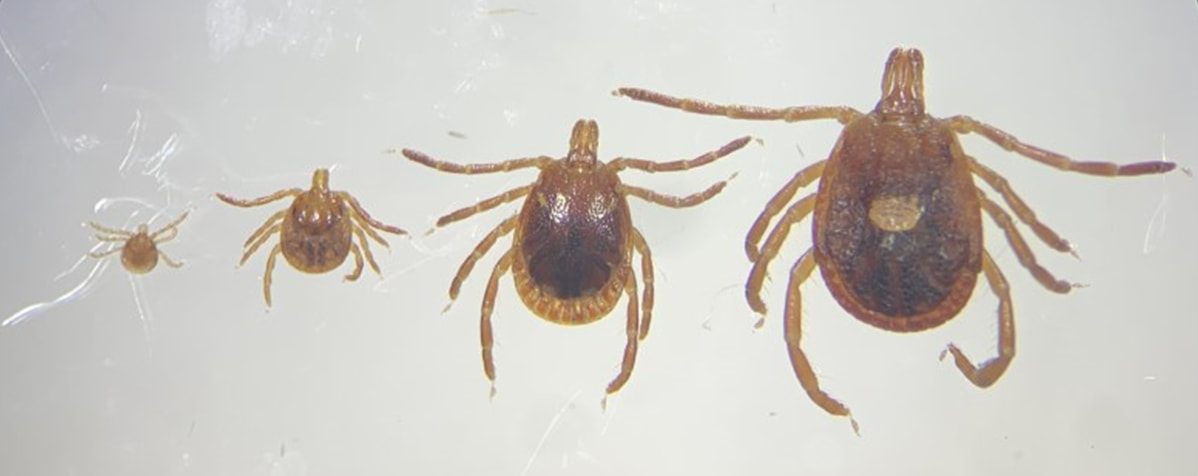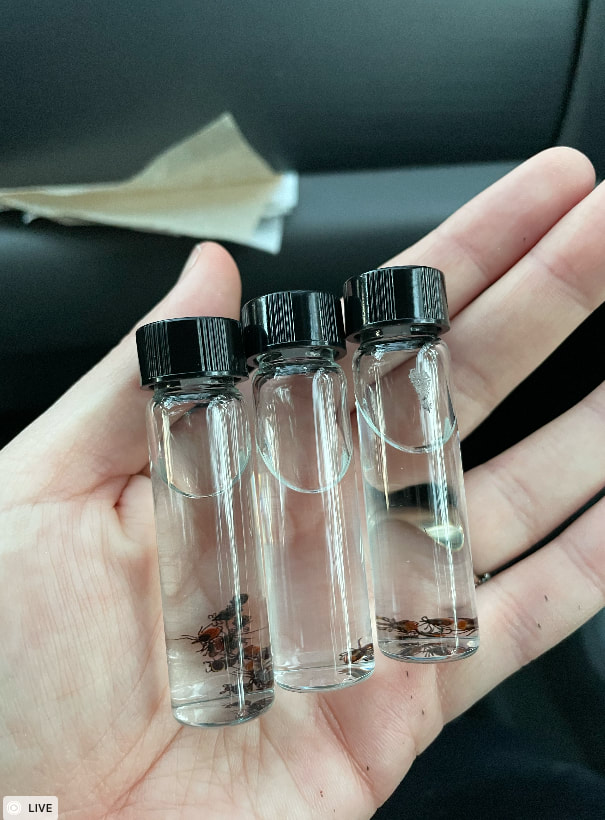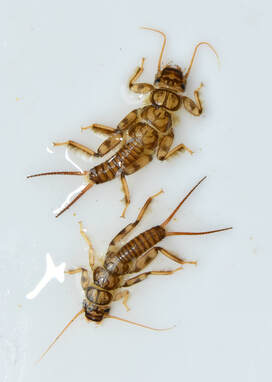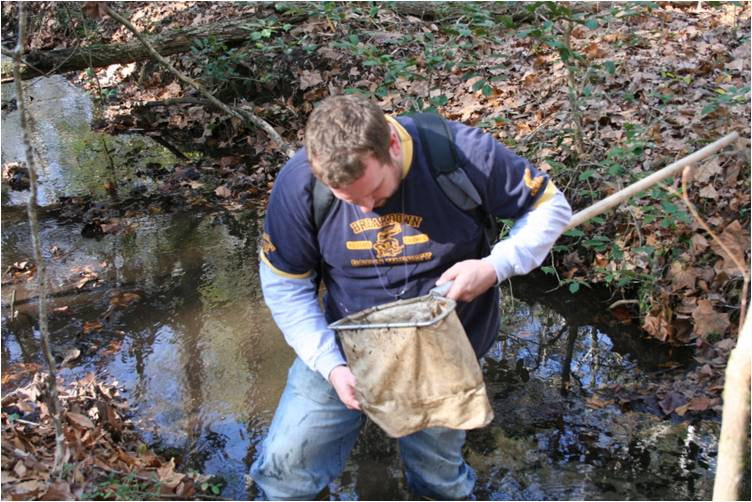|
Are insects mindless robots? Do they experience more than we give them credit for? New evidence indicates that insects and other arthropods may exhibit a broad range of emotions, feelings, and cognitive abilities that we were previously unaware of. By Sydney Crawley Ph.D. Would you think twice about squashing a bug if it was afraid of dying? If it felt pain, would you pause before you applied broad-spectrum insecticides? A sense of awareness as well as the capacity to have feelings such as, but not limited to, fear or pain is classified as sentience. Sentient animals are typically given more animal welfare protection under the law than animals that are not sentient. In addition, vertebrates (animals with a backbone) are often given more protection than invertebrates (animals that lack a backbone). Recently, a group of researchers in the United Kingdom (UK) determined that there is enough evidence to classify certain groups of invertebrates as sentient. In their report (linked within this Smithsonian Magazine article), the authors reviewed 300 research studies. Ultimately, they concluded that invertebrates should be protected under animal welfare laws and that slaughter practices like boiling crustaceans alive are inhumane. Crustaceans such as lobsters, crabs, and crayfish are in the same Phylum (one of the ways we group related animals together) as insects and spiders—the Arthropoda. Arthropoda literally means “jointed foot” and contains all animals with jointed limbs, segmented bodies, and skeletons on the outside versus the inside. Although insects were not assessed for sentience in the report, the authors’ conclusions have implications for the way we view animal awareness, especially among closely related taxa.
However, a number of recent studies indicate that some insects are capable of learning, recall, and a host of other behaviors that are indicators of higher-level cognition. For example, carpenter ants are capable of decision making and wasps can recognize faces. Impressively, honey bees (Apis mellifera) exhibit multiple behaviors indicative of higher-level cognition. They can count to four, communicate the location of food sources using a waggle dance, and they might even scream/feel fear when they are attacked by predators. FINAL THOUGHTS There is mounting evidence that more consideration should be given to insects when it comes to their ability to feel pain, and we probably cannot dismiss these creatures as simply robotic in nature. Whether or not insects are truly sentient remains to be seen, but based on data, we have to at least acknowledge that insects are capable of learning, decision-making, and other complex behaviors that were previously only associated with vertebrates.
0 Comments
How does a tick bite make you allergic to red meat? Can you prevent this from happening? One entomologist wants to prepare you with information to protect yourself and the ones you love from ticks.
One of the most important—and unique—aspects of this disease is that the allergy has been linked to the bite of certain hard ticks species. (Ticks are often grouped as hard or soft based on their body type- and no, it has nothing to do with how much time they spend at the gym.) A large majority of patients diagnosed with AGS have a history of tick bites, or these people have elevated antibodies in their bloodstream associated with the alpha-gal sugar following tick bites. Two tick species have been strongly implicated in causing this allergy in the US—both commonly found biting humans. The picture above depicts the most common tick associated with AGS (and one of the most aggressive human-biting ticks in the southeastern US!): the Lone Star tick, Amblyomma americanum. Currently, scientists believe that the ticks’ saliva contains alpha-gal antigens, which are little molecules that cause our bodies to have a reaction. Thus, after a human is bitten by the tick and develops the reaction, their immune system is ready to combat a future attack. Unfortunately, if this person eats red meat at a later time—which contains alpha-gal—their body might mistake the alpha-gal from the meat with the alpha-gal from the tick bite. The mistaken identity might lead to an allergic reaction, which likely increases in severity the more times this person eats red meat. Additionally, alpha-gal sugar is not only present in red meat but also in certain products or foods made from mammals (examples: some dairy products or gelatin), meaning these products might also trigger the allergy. While the medical community is understanding how to handle this new allergy in patients, medical entomologists are stressing how important preventing the allergy is in the first place. One of the best prevention methods is preventing tick bites all together and being vigilant about tick bites when exposed. For those people who enjoy being in the great outdoors (of course where all the ticks are), utilizing EPA registered on-skin repellents containing DEET are a great defense. Additionally, clothing containing permethrin can also keep ticks off of you. If tick habitat is completely unavoidable (for those who backpack, hunt, or even have animals that may bring in ticks), completing a “tick check” as soon as you are able to after leaving the environment is recommended. By checking all of your clothing, shoes, gear, etc. for ticks carefully, you lessen the likelihood of bringing any into your home. Once you are inside, check your entire body for ticks, especially in places where your clothing was tighter on your body (think: back of your knees, between the legs, ankles, armpits, around your waist, etc.). Lastly, if you do find a tick on your body biting you, remove it as soon as possible. The Centers for Disease Control and Prevention has an excellent removal infographic. Although not the first human allergy associated with arthropods (think: honeybees, ants, or wasps), AGS is one of the only ones that is (1) caused by the bite (instead of a sting) of an arthropod resulting in (2) an allergy to a food we eat. Because AGS is relatively new to the medical community, there is still a lot we do not know about how the allergy works.
Making the Case to Increase Macroinvertebrates Use in Stream Restoration Assessment/Monitoring3/16/2022 Why are insects living in streams important? How do people restoring streams determine they are successful? One entomologist wants you to know about an easier way to determine the health of a stream and if those fish you are looking for might be there. By Rich Biemiller, Ph.D. When people speak about aquatic macroinvertebrates, they are generally referring to immature insects and other small organisms that live in water and can be seen with the naked eye. Macroinvertebrates have long been used to assess water quality and, in particular, stream health. Since then, scientists have developed numeric values to describe and increase the effectiveness of using macroinvertebrates for assessment and monitoring of freshwater environments. The relative smaller size and shorter life cycles of most of these macroinvertebrates allow their communities to respond more quickly to disturbance (i.e., introduction of pollution) than larger, longer lived organisms, such as fish. This ultimately allows scientists to discover water quality issues earlier. Additionally, the effort, cost, and equipment required to sample macroinvertebrates are all significantly lower than those required to sample fish. The question then becomes: Why do many stream restoration monitoring efforts choose to focus on fish (often trout) while all but ignoring macroinvertebrates to determine success? In my opinion there are two central explanations for this: money and expertise. Money follows fish, especially game fish, and in particular trout. Many restoration projects are initiated to increase the numbers and range of native, desirable game fish. There is nothing inherently wrong with this. Using fish makes complete sense since, in many cases, because money from sales of fishing licenses or from fishing organizations provide the funding for restoration projects. As a result, monitoring the target fish after the completion of the project is logical. However, ignoring the macroinvertebrate community presents an incomplete picture of stream health and can prevent solving real fish re-establishment problems. For instance, if a stream has been restored, why have the fish not returned? Macroinvertebrate communities can provide many useful insights to help stream restoration projects solve complicated problems. Diverse, robust, pollution-sensitive macroinvertebrate communities in restored parts of the stream show that fish have a viable food source and clean water- two critical requirements that increase the chance a fish population will successfully establish. Additionally, many macroinvertebrates fly for a portion of their life cycle meaning they can re-inhabit areas that fish may not be able to access. Therefore, a healthy macroinvertebrate community persistently noted in an area where fish populations are low can indicate either a lack of suitable fish habitat (structure or deep pools) or a connectivity barrier between the source fish population and the project site. The second reason why stream restoration projects ignore macroinvertebrates is that identification of these creatures is hard and takes expertise. Even to an expert, identification of some organisms to the species level can prove extremely difficult. Further, the fact that macroinvertebrates consist of insects and other non-insect organisms mean that more than one expert may be required to identify all sampled organisms to the species level. Yes, identification of macroinvertebrates to species level is not easy. I can personally attest to this. I tried several times before getting certified in aquatic insect identification at the family level! However, identifying all organisms from a sub-sample to the species level is not always necessary to get a good idea of what is going on in the water. Simply being able to recognize that major groups of insects are missing provides valuable information. For example, a community lacking mayflies, stoneflies, or caddisflies where one would expect to find them would indicate a water quality issue that needs further investigation. Additionally, with the rise of environmental DNA techniques that allow species to be identified from water samples, the need for specialized expertise may become moot if this task can be outsourced with technology and become more affordable in the future. To be clear, I am not advocating forsaking the monitoring of fish. Rather, I would suggest that a macroinvertebrate component be added to monitoring protocols. This community is vital for the success of fish populations and assessing stream health restoration goals. Low macroinvertebrate species diversity or only pollutant tolerant species can indicate that the area has an issue that has not been addressed, which could limit the success of fish populations. Additionally, sampling macroinvertebrates in monitoring efforts can give insights into issues that could be hidden by focusing solely on fish. So next time you are planning a stream restoration with a monitoring element (which they all should have) consider adding a macroinvertebrate component to your monitoring protocols. About the author: Dr. Rich Biemiller is an aquatic entomologist and freshwater ecologist for the Minnesota Department of Natural Resources. He serves as a regional watershed specialist working to restore disturbed streams. Email: [email protected] |
Bug Lessons BlogWelcome science communicators and bug nerds!
Interested in being a guest blogger?
Archives
November 2023
Categories
All
|
